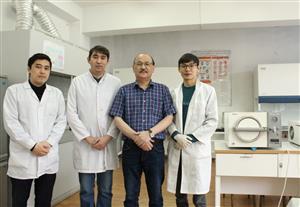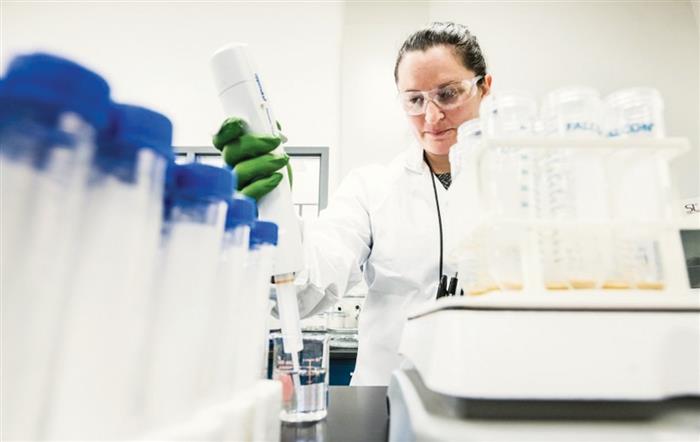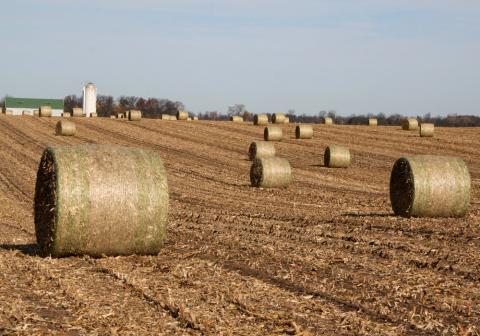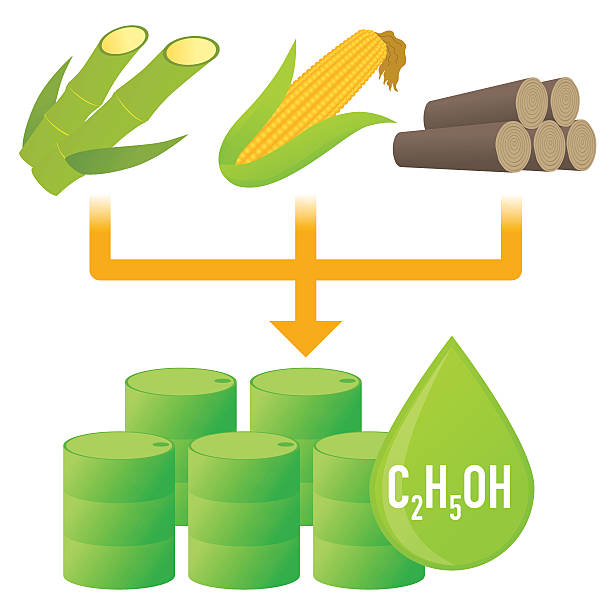- Main page
- News
BIOFUEL PRODUCERS
9/6/2021
Today, many countries use bioethanol as a fuel. Its main goal is to reduce the emission of carbon dioxide into the environment. As the urgency of environmental problems increases, so does the demand for them. According to Markets & Markets, the bioethanol market will reach $ 64.8 billion by 2025. Last year, its total volume was US $ 33 billion. However, despite the fact that the consumption of bioethanol alcohol is more efficient, the production process and raw materials are still controversial. KazNU scientists also have doubts about the latter.
For example, the Faculty of Biology and Biotechnology is implementing four research projects aimed at obtaining biofuels. One of them is the project "Obtaining recombinant strains of microorganisms capable of effectively expressing cellulose genes for the production of biofuel from cellulose raw materials", headed by Dr. Academician A. Bisenbaev. As a result of research in this area, transgenic industrial strains of Saccharomyces cerevisiae were obtained. It has the ability to accelerate the production of bioethanol. The scientist said that such industrial yeast strains have their share in the production of bioethanol.

"Get ready for winter from summer"
- Our country is one of the richest countries in mineral resources. We also have many underground energy sources, that is, natural reserves of oil and gas. Kazakhstan accounts for 1.8% of world oil production and 0.7% of gas. This is a very large figure. But over time, its size will decrease, as oil and gas are non-renewable energy sources. According to some forecasts, the amount of oil in the country may decrease by 60% by 2050. This leads to an energetic dependence on another state. Currently, all policies are based on energy sources. Therefore, developed or developing countries conduct a very high level of scientific and technical research to create energy sources that can be an alternative to underground energy sources, said Amangeldy Kuanbaevich.
Considering that the country adheres to the concept of "Eternal Country", the scientist stressed the importance of paying attention to this issue.
- We need now to think about what will happen in 100 years. Because without energy, the development of a country, its dependence on other countries and, in general, its survival as a state raises questions.
There are many alternative energy sources now. One of them is bioenergy, which we are studying. Kazakhstan is very rich not only in mineral resources, but also in biological resources. Our country ranks 9th in the world. This means that we have the ability to obtain energy from biomass, - he said.
"What is biomass energy?" We will answer the question based on the opinion of the scientist. This saves energy throughout life. For example, plants. Compared to oil and gas, factories are renewed every year. Amangeldy Kuanbaevich believes that "this is also an inexhaustible source of energy."
- Now the question is how to use it. How can it replace oil and gas? Bioenergy sources are biogas, bioethanol, biodiesel. Our goal is to obtain bioethanol from biomass. Currently, the leading bioethanol producers are the USA and Brazil. Bioethanol is sourced from corn in the United States and sugarcane in Brazil. According to him, according to forecasts, in 2030-2050, the world production of bioethanol will reach 280 billion tons.

Less carbon dioxide emitted
"In general, what is bioethanol?" We received the following answer to our question:
- We call it fuel ethanol. For example, in Europe, America, Brazil and many other countries, filling stations use gas instead of gasoline. Gasoline is a mixture of gasoline and alcohol, i.e. ethanol. Ethanol accounts for about 60 percent of Brazil's vehicle fleet. In the United States, ethanol is blended with 15% gasoline, and in Europe with 6-10%. In some countries, the ethanol content of fuels can be as high as 25 percent.
According to experts, the addition of alcohol to gasoline reduces carbon dioxide emissions by 30% and the emission of harmful gases by 40%. This is due to the fact that oxygen in alcohol causes complete decomposition of harmful components of gasoline. Consequently, the use of bioethanol will solve huge environmental problems. In addition, when bioethanol is used as a fuel without additives, water and carbon dioxide are released (in very small quantities, about 0.03 percent).

Food or energy
- Makes alcohol from food in America and Brazil. For example, corn and sugar beets or sugarcane are used to make bioethanol. This, in my opinion, is an immoral method. Because many people all over the world are starving. In this case, it would be immoral to waste grain and food on fuel, that is, on ethanol. It's one. Secondly, this situation will lead to an increase in food prices. Thirdly, we will lose the possibility of rational use of agricultural land. It is clear that if everyone sows corn to get bioethanol, there will be inequality in agriculture. So I decided that I really needed to learn how to do it right. “My project is based on the production of bioethanol based on lignocellulose biomass,” A. Bisenbaev said.
According to the scientist, 17 million tons of wheat were produced in Kazakhstan in the 90s. 39 million tons of straw will remain in the fields. Only 1% is used. Most of the straw left over from cereals is burned right in the fields. This, in turn, results in the release of large quantities of air pollutants. Therefore, the main need is to find an alternative way to get rid of the excess wheat straw. The most efficient way is to use agricultural waste as an energy source.
- We cannot eat lignocellulose biomass. Therefore, it is necessary to mix it with the enzymes necessary for its degradation. This is an expensive technology. Secondly, grass and paper waste, wood chips can be obtained as lignocellulose biomass. How to get energy from lignocellulose biomass? For example, all life on Earth works like a machine. We need not only fuel, but also energy. In fact, every one of the trillions of cells in the human body breathes. The metachondria in each of them are responsible for the respiration process. Their energy source is glucose. Herbs, wood, and paper are made from polymers called cellulose. And cellulose is made up of billions of glucose. Wheat starch is also a polymer that also contains glucose. But the difference between them lies in the interaction of glucose. Starch is called alpha, cellulose is called beta-glucosidic binder. We do not have an enzyme that breaks the bond between ett-beta glucosite. The enzyme amylase in human saliva tends to destroy the binding of glucose to starch. All cells use this glucose as an energy source, says the expert.
Genetic engineering helps a lot
According to the scientist, in the genome of fungi there are "instructions" for the synthesis of certain enzymes. They are capable of cleaving cellulose macromolecules into short chains.
- Mushrooms can use the glucose in cellulose as an energy source through an enzyme called cellulose. Therefore, information about the enzyme cellulose is recorded in the gene. For example, one of them is Lentinula edodes, Aspergillus niger, a celluloid mushroom. According to the project, we will isolate the gene from these mushrooms. Saccharomyces cerevisiae are yeast cells used in the production of bread or alcohol. This technology has not changed for millions of years. However, these microorganisms cannot consume cellulose as an energy source. We insert genes into these yeast cells that are needed to make the enzyme cellulose. The result is recombinant or genetically modified yeast cells. With the help of these microorganisms, we can obtain ethanol from straw or sawdust of grass, cereals, - says Amangeldy Kuanbaevich.
Taking into account the laws of market relations, in addition to the quality of any product, the price also plays an important role. According to the project developed by KazNU scientists, the cost will be very low, since waste is used as a source of raw materials.
“There are four different strains in our laboratory now. Of course, enzyme alone is not enough to completely break down cellulose. At least four enzymes are required, so four different genes must be introduced. And you need the elements that regulate the implementation of the information stored in the gene. When cellulose breaks down, a substance called cellobiose is formed. He needs a carrier to enter the cell. In a word, this is a very complex technology, - said Amangeldy Bisenbaev.
In short, both science and the scientists who serve it contribute to improving the environment. Now the work is in the hands of citizens capable of reforming the country's fuel policy.

